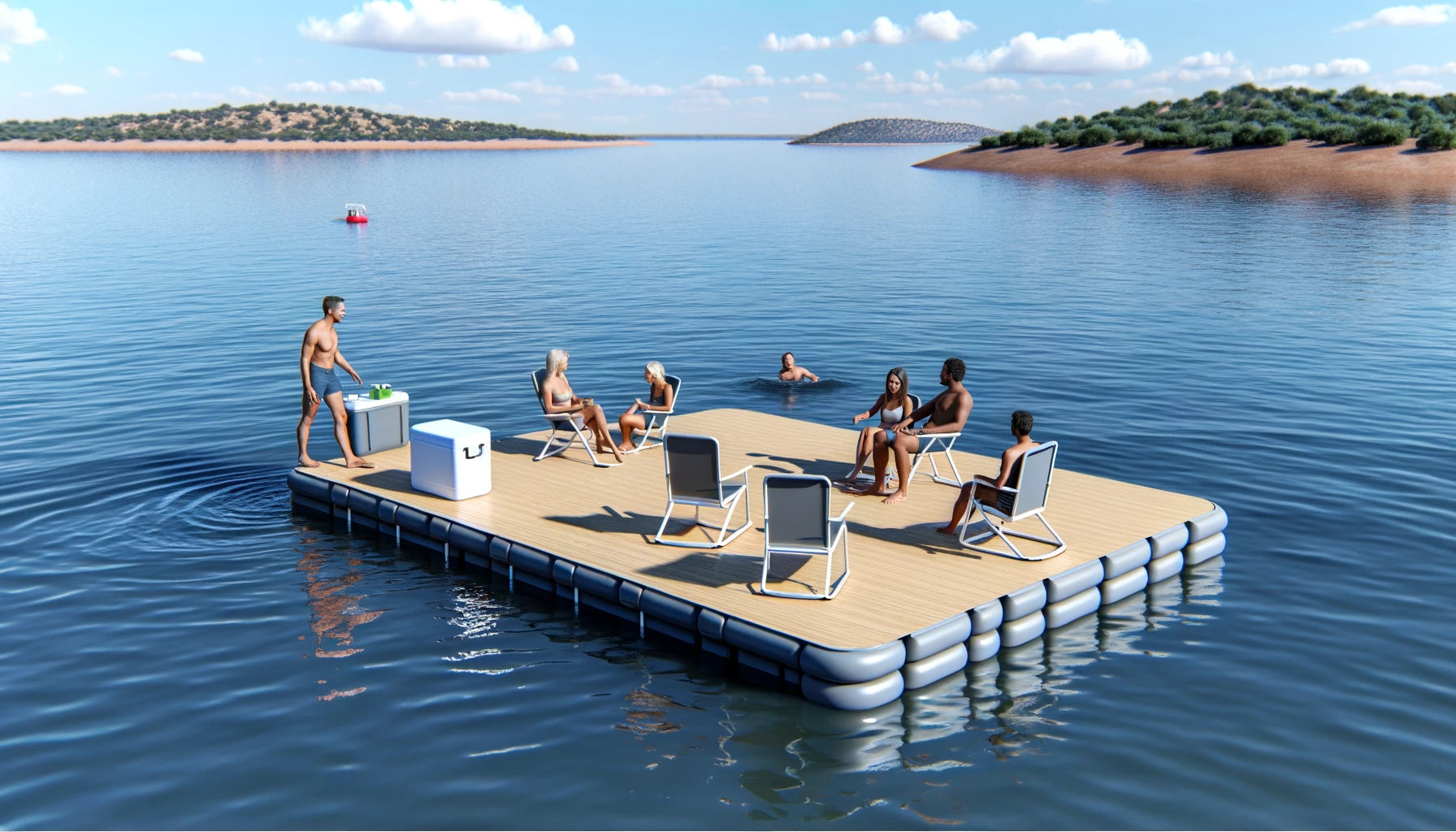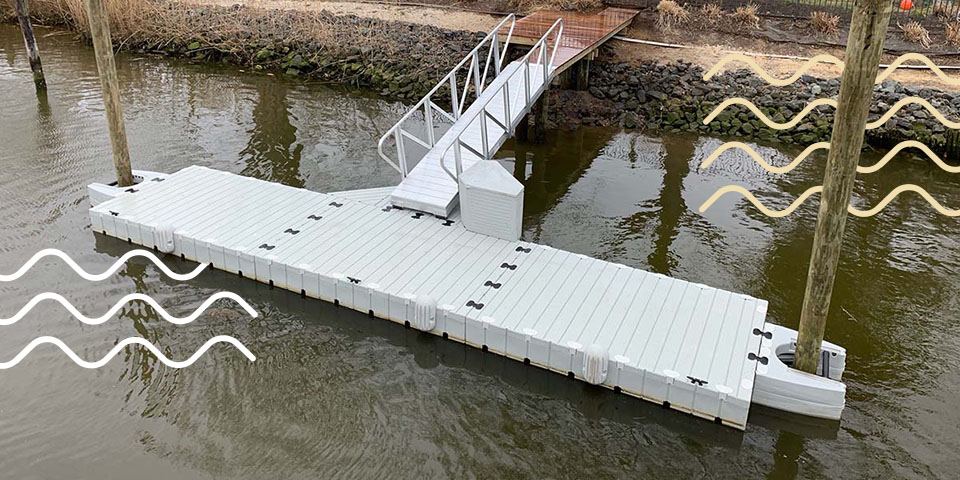Ingenious Floating Docks: The Future of Waterfront Gain Access To and Entertainment
Ingenious Floating Docks: The Future of Waterfront Gain Access To and Entertainment
Blog Article
Produce the Perfect Docking Remedy With Floating Docks
Floating docks present a functional option for a range of maritime demands, adapting flawlessly to varying water levels and diverse vessel types. Their modular nature enables fast setup and moving, yet the selection of suitable products and design features is critical for making certain both capability and visual appeal. As we discover the necessary components that contribute to the efficiency of floating docks, several crucial variables relating to security and maintenance will certainly arise, elevating inquiries regarding exactly how to maximize your docking experience. The succeeding conversation will certainly illuminate these crucial considerations.

Advantages of Floating Docks
Floating docks deal many advantages that make them a suitable option for different maritime applications. Unlike dealt with docks, floating docks surge and loss with the trend, guaranteeing constant availability for vessels.
Furthermore, floating docks are normally simpler and quicker to set up compared to conventional fixed structures. Their modular layout permits for uncomplicated assembly and disassembly, promoting maintenance and relocation when necessary. This adaptability is especially valuable for short-lived applications or in atmospheres where conditions might alter.
Floating docks also often tend to be more eco-friendly, as they decrease disruption to the seabed and bordering aquatic ecological communities. Their buoyant nature lowers the danger of damage to marine life, advertising a much healthier setting. Additionally, these docks can be customized to fit various vessel dimensions, making sure that they satisfy specific operational requirements - dock company.
Eventually, the combination of adaptability, ease of setup, and ecological considerations makes floating docks a very reliable solution for a wide variety of maritime demands.
Selecting the Right Materials
Choosing the ideal materials for floating docks is important to ensure longevity, security, and durability. The choice of products directly affects the dock's performance in different ecological problems, consisting of direct exposure to water, sunshine, and prospective wear from marine website traffic.
Usual materials made use of for floating docks consist of light weight aluminum, timber, and high-density polyethylene (HDPE) Aluminum is lightweight, corrosion-resistant, and calls for marginal upkeep, making it a superb option for durability. However, its initial expense can be greater contrasted to other products.
Timber, while cosmetically appealing and giving a conventional look, can be susceptible to rot and bug damages otherwise appropriately dealt with. Consequently, using pressure-treated wood or normally resilient varieties like cedar or redwood can mitigate these issues.
HDPE is a preferred choice because of its resistance to UV rays and chemicals, together with being ecologically friendly. floating dock company. It is readily available and light-weight in various shades, enabling for modification
Ultimately, the right product choice will certainly depend on particular needs, including spending plan, desired aesthetic appeals, and ecological considerations. Careful examination of these elements will certainly cause a resilient and successful floating dock solution.
Design Considerations for Security
When developing floating docks, making sure stability is a basic element that can significantly influence their capability and security. Stability in floating dock layout is influenced by numerous variables, consisting of buoyancy, weight circulation, and the setup of elements. An optimum buoyancy system must utilize materials that provide enough lift while lessening weight. This equilibrium ensures that the dock remains above water, even under varying loads.
Weight distribution is critical; uniformly dispersing tons across the dock stops turning and enhances security. This can be achieved via tactical positioning of docking tools, such as fenders and cleats, along with appropriate spacing of drifts. Additionally, the dimensions of the dock ought to be attentively planned. Broader styles can offer enhanced stability, particularly in harsh water problems, while longer docks may call for additional supports to stop drooping.
Another vital consideration is the ecological effect, including wave action and wind. Incorporating functions such as sidewalls or skirting can help mitigate the effects of ecological pressures, preserving security in negative conditions. Ultimately, a mix of thoughtful layout, material option, and understanding of environmental elements will generate a drifting dock that meets both stability and safety see it here and security requirements.
Installation Tips and Techniques

Next, protect the required licenses and follow neighborhood regulations, which might dictate installation methods and ecological factors to consider. If called for, involve a qualified specialist experienced in floating dock setups. Usage top notch materials made for aquatic settings to improve toughness and long life.
When positioning the dock, straighten it parallel to the shoreline to facilitate simple access. Make certain that the anchoring system is durable, using cinder block or helical supports to support the dock versus wind and wave action. It's critical to make up seasonal water degree fluctuations, consisting of prospective ice activity in colder environments.
During the installation, verify the dock's floatation and security before finalizing the anchoring. Routinely examine the installment for any kind of indicators of wear or damage. By following these pointers and techniques, you can accomplish a secure, practical, and cosmetically pleasing floating dock setup that meets your needs.
Maintenance and Care Standards
Keeping and caring for floating docks is crucial to extending their lifespan and ensuring risk-free usage. Regular evaluations ought to be conducted to identify any indications of wear, damage, or marine growth. Try to find fractures, loosened fittings, or discolored locations on the dock's surface, as these problems can endanger architectural integrity.
Cleansing is necessary. Make use of a pressure washing machine to remove algae, barnacles, and particles, which can accumulate in time. For persistent development, take into consideration eco pleasant cleaning representatives that will not damage water life.
In addition, examine the mooring lines and supports frequently to ensure they are safe and secure and totally free from rust. Change any kind of frayed or harmed lines promptly to preserve security.
Throughout extreme weather condition, such as storms or freezing problems, take precautionary procedures. Safeguard the dock with added mooring lines and, if practical, remove any removable components to avoid damage.
Conclusion
In verdict, the execution of floating docks presents a versatile and efficient docking solution official website ideal for different maritime applications. With appropriate installment and routine maintenance, floating docks can provide reliable and efficient docking experiences for a vast array of vessels.
As we check out the necessary aspects that add to the effectiveness of floating docks, a number of crucial elements pertaining to security and maintenance will arise, elevating concerns concerning how to enhance your docking experience. reference Unlike taken care of docks, floating docks increase and fall with the tide, guaranteeing regular availability for vessels.When developing floating docks, making certain stability is an essential aspect that can substantially influence their performance and security. Stability in floating dock design is affected by numerous variables, including buoyancy, weight circulation, and the plan of elements. Ultimately, a combination of thoughtful style, product choice, and understanding of ecological elements will certainly yield a drifting dock that meets both security and security demands.
Report this page